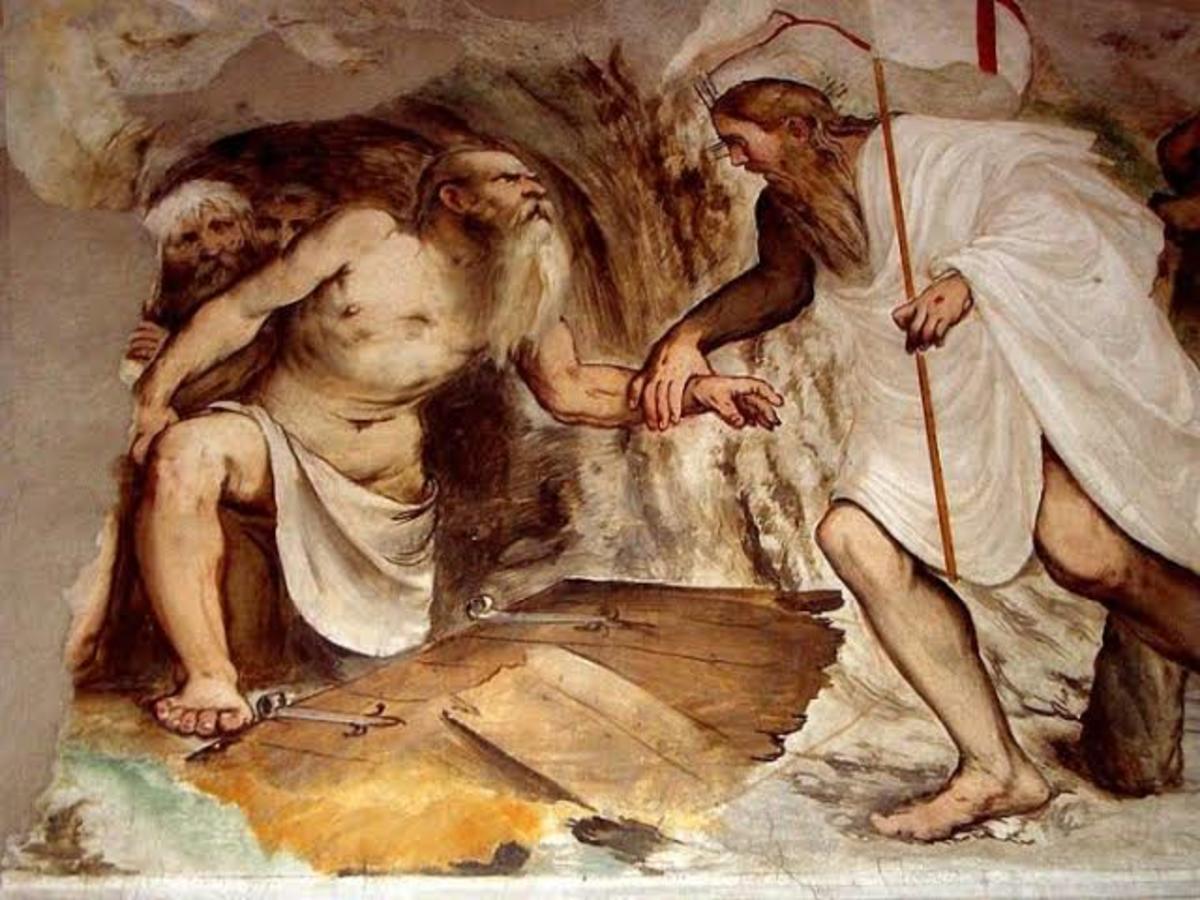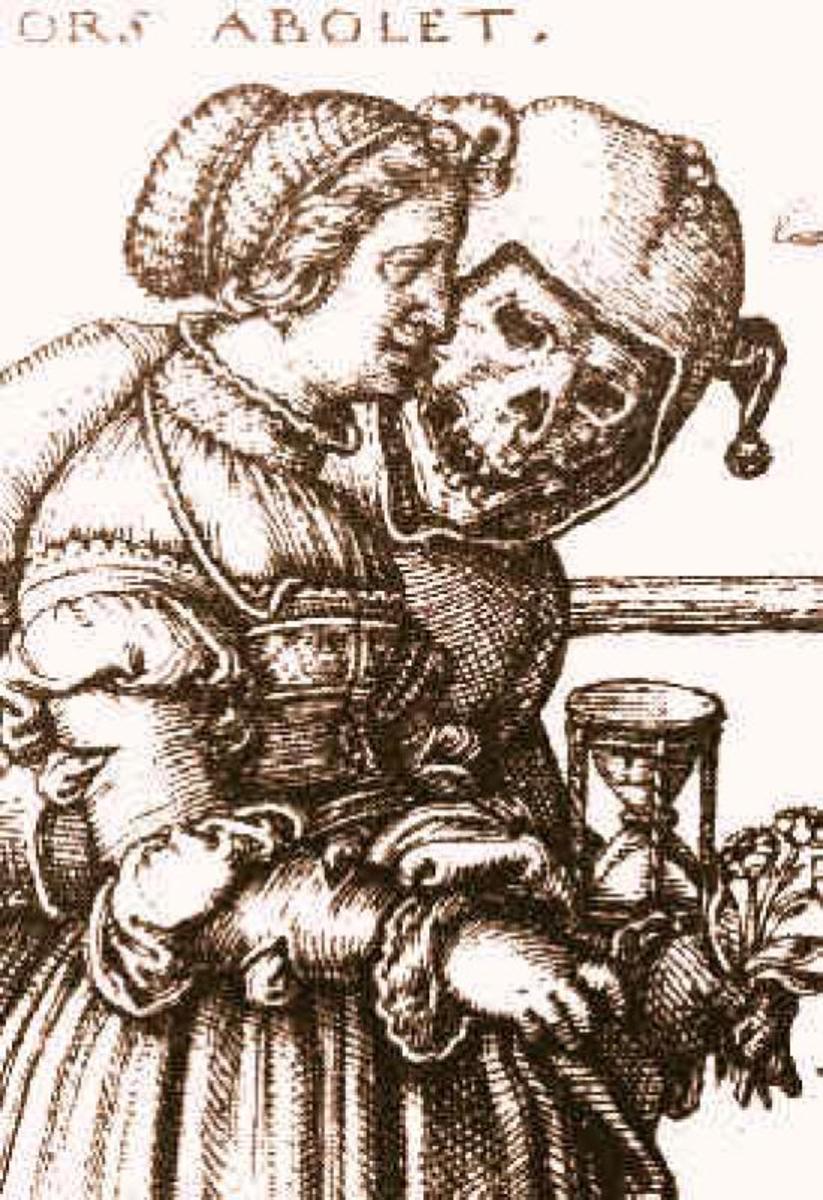Biblical Truth Using Stories

Study the Bible and discover deeper meanings in the stories.
Anyone who reads the Bible will soon discover a pattern:
Life lessons are embedded
in the stories.
Billy Graham once preached a sermon about the rich young ruler. This famous sermon was based on five biblical principles for reaching heaven that Rev. Graham identified in the passages:
Matthew 19: 16-22 from The Message
This story teaches 5 Biblical principles..
Come to the right person (Matthew 19:16).
Come at the right time (Matthew 19:16).
Ask the right questions (Matthew 19:16, 20).
Get the right answer (Matthew 19:17-21).
Make the right decision (Matthew 19:22).
Billy Graham is the best "storyteller" style preacher. Our first Pastor had a very similar style, and my husband is a natural at this type of communication.
In a recent college level ministry course called Hermeneutics, how to study the Bible, I discovered how many types of "stories" are in the New Testament Gospels.
A thorough study begins with a definition.
Definitions of story (n)
sto·ry [ stáwree ]
factual or fictional narrative: a factual or fictional account of an event or series of events
short fictional prose piece: a work of prose fiction that is shorter than a novel
plot of fiction or drama: the plot of a novel, play, motion picture, or other fictional narrative work
Synonyms: tale, narrative, account, yarn, legend, fairy tale, chronicle, anecdote
Encarta World English Dictionary
Quoted below is the introduction to Chapter 12 in Introduction to Hermeneutics: How to Interpret the Bible, "Genres: Gospels, Acts and the Epistles"
"Psychologists and counselors who study the fundamentals of human communication tell us that if we learn to converse with a friend or spouse using word pictures, we can improve our verbal skills and deepen our relationships. This kind of conversation uses a story to activate both the emotions and intellect of the person we are talking with. When we use word pictures, we help the other person to experience our words, not just hear them.
The New Testament also abounds with word pictures and literary techniques that capture our attention, embed thoughts in our memories, and motivate us to action. At the same time, we are often puzzled as to how to interpret its figurative language. In the Gospels, nine out of ten of Christ's statements use figurative or poetic language. How do we determine when He is using a figure of speech?"
3 topics I'd like to expand in this study:
1. Communication in the form of word pictures.
2. Verbal skills that deepen relationships.
3. Literary techniques known to motivate into action.

1. Stories using "word pictures."
It has been said, "A picture is worth a thousand words."
Reversing that statement, how many of your words invoke pictures?
This picture of my husband at the Vietnam Veterans Memorial Wall tells many stories. Unspoken thoughts, insightful determination, contemplative purpose, brokenness internalized, memorable heartaches, unfulfilled dreams, historic sensitivity, emboldened vision and enlightened courage.
What I see in this picture comes form knowing him. His call to serve, his history, including who he was when we met as teenagers, the 20 year old I married, the husband who joined the Army, the Dad he is to our sons, the Grandfather he's become and who he is currently serving as a full-time Chaplain to bikers.
In this photo, standing, reflecting on the names of his peers, as each chiseled letter gouged out of the stone pillar at his side, screams at him a message defining his purpose. In his peripheral view he gains new vision. Reaching survivors and victims of war, showing God's love to those who experienced this horror. Bringing veterans to this healing place. Simultaneously, because of his former immature reactions to this wartime era, memories are toying with his emotions. Cold hard reality of his own scars are being scraped open again, so that they can heal better this time. Possible questions on his mind: "Why did I escape this fate? Am I worthy of this call? Are my efforts worthy of the task before me?"
But the picture above obviously isn't the whole story. It is cropped from this image.

If you pan out a bit from the cropped picture you see a different story.
He is standing with a man, the one in the green boonie hat, who came from California to Washington D.C. along with nearly 2000 other men and women, on motorcycles, for the sole purpose of seeing names on this wall. Getting rubbings of the indentations called vowels and consonants, forming etched names of friends, who at the hands of enemies, lost their lives for a noble cause now coined, "freedom." The task before him is insurmountable and I see it in his face. I have gained permission to take these pictures. The gentleman in the hat has sheets of paper prepared for the rubbings, On the 3000 mile ride he had no idea how difficult the task would be. His own emotions, the pressing crowds, the familiar faces of fellow riders -- former strangers, now tight friends, the items dropped at the foot of the wall reflecting pain and sorrow, but potentially blocking his access, the tourists with iPods, cell phones and babies in strollers, too much stimuli to take in, overwhelming.
But, the arm around his shoulder gave him pause for the moment and strength for the task.

Word stories are like this. Before cameras there were artists.

Biblical truth using short stories called pericopes.
What is a pericope?
Pericopes are small, self-contained units that go together to form the Gospel.
I would compare it more to a theme magazine. I subscribe to knitting magazines. The magazine is made up of many stories, how to knit, where to buy yarn, how to choose the right yarn, how to fix knitting mistakes, how to do complicated designs, how to fit and shape pieces, how to design your own items, and articles about people who are learning and people who are experienced. Free-lance writers submit articles, but they have guidelines to follow in order to be published in the periodical.
When I pick up a knitting magazine, I don't expect to find grocery store coupons or car ads. That would be off topic.
When a person reads the Bible as if it is a well edited periodical that has a large collection of stories, many on a same topic, they begin seeing it as a whole, not bits and pieces. The results are a fascinating journey to a clarity of God's purpose in guiding this book be compiled centuries ago. The Bible has not been added to or revised from the original scrolls, only prayerfully interpreted to help generations comprehend each intended teaching.
The intent of each teaching has been carefully considered with each new version that goes to print. Teams of scholars come together to study the original scrolls comparing them to modern language. Bible interpreters spend a lifetime studying each word, passage, paragraph, section, story, chapter, book, then compare their findings between the Testaments, Old and New. A thorough study of Bible customs and the culture is also a part of the interpretation process.
Like a newspaper or periodical is made up of several articles contributed by several individuals, the Gospel, is a collection of episodes each one a small incident recorded sometimes chronologically other times strictly emphasizing a specific teaching, topic, or theme. These epics are pulled together into one teaching similar to designing a mosaic. The original authors carefully recount their personal experiences with Christ, while clarifying the beginning and ending of each topic. The setting may change, the time, location, audience or event influence the beginning and ending of the snippet. In the end, reading it all in context, then reading each of the four books of the Gospel, Matthew, Mark, Luke and John in context, the stories and their "word pictures," their purposes, begin to make sense.
The lesson continues to point out that, "In contrast to newspapers, most versions of the Bible do not have bold headings indicating the beginning of each new story or pericope (although some versions do have imposed headings at the beginning of major breaks). Instead, we look for introductory phrases that introduce a new pericope." Reading the transitions in these introductory phrases explains:
Mark 1 (numbers indicate the verse number in Mark Chapter 1)
1 The beginning of the good news about Jesus
9 At that time Jesus came from Nazareth in Galilee
16 As Jesus walked beside the Sea of Galilee,
19 When he had gone a little farther,
21 They went to Capernaum,
29 As soon as they left the synagogue,
32 That evening after sunset
35 Very early in the morning,
Each of these lines indicate the story is about to transition, build, add emphasis or change topics.
If you pick up a Bible and read the Book of Mark in the New Testament, you will see "transitions." Each transition starts a new story, but each snippet is building on the last or preparing the reader for for the next.
It is a joy to do a study of the synoptic gospels. Meaning the four books have many of the same stories, of course told from each individuals point of view, yet keeping to the purpose of the teaching.
2. Using stories to illustrate a point can help deepen relationships.
I'm not certain we always need to use words, hugs help.
There are times when people ask, why do you do what you do? (Chaplains to Bikers)
Our answer can be as simple as, "We love riding, we love people, we love God and want to share Him on our journey."
Or we may ask if they have some time to hear the details of our amazing personal journey. It is one of dreams shattered, hope lost, separation, war, disappointment, addiction and failure, but God. The road we took in word pictures.
3. Stories using literary techniques are known to motivate into action.
A parable serves as an illustration of the truth Christ wants to teach.
It can be categorized as an encounter.
The calling of Levi (Mark 2:13-17)
In this story, Jesus' accusers want to know why he is eating with tax collectors and sinners.
"On hearing this, Jesus said to them, 'It is not the healthy who need a doctor, but the sick. I have not come to call the righteous, but sinners" (Mark 2:17)
The technique used here is a correction for the accusers and a faith challenge for the sinner.

Biblical truths. Truths to live by are woven into Bible stories.
A story, a guideline and a promise.
I remember, when I first discovered the Bible as an adult. I was completely enamored with the truths behind the stories. The first example was the study of Adam and Eve. As a child I had heard Sunday school teachings about the couple, eating an apple, arguing with a snake, and hiding what they had done when God came looking for them on His normal routine visit.
When I joined an adult Bible class and heard this teaching, then I was included in the discussion, I had a revelation about my own conscience. I read the story in Genesis for myself in preparation for the class, then heard some more detailed presentation in a classroom setting which completely explained the reason the story was preserved for us today.
Thus goes the entire Bible. The reason we study the Bible and willingly hold it up as a banner and a standard for living. Godly principles for man to live by were recorded in the Old and New Testament using stories that humans can relate to throughout the ages.
In the Genesis story, the very beginning of mankind, the basic story goes: A man, given specific instruction by God, and who was standing right there with his wife, but when she was tempted, and when God was misquoted, she gave in to the tempter's wiles. When she turned to her husband and she convinced him all was well, then against his own judgement the man accepted the same bribe. Soon they found themselves hiding from God on the same turf where they used to enjoy God's presence. They would anticipate his arrival, then walk and talk with Him, in the cool of the day. Yet, now a certain shame covered them as they feared facing Him.
Their transformation from anticipation to dread.
Stepping down from loyalty to God to a fear of Him.
Rising in confidence lowered by pride, then shame.
And now the blame game begins.
All human conditions. All recorded for our benefit.I'm getting why the scriptures had to be recorded. If we relied on Adam to pass on the information, it already got distorted in the face of temptation, standing together in the garden.
When I heard this teaching, I sat in a room full of adults and wept.
I always thought Adam and Eve ate a piece of fruit and it made them evil, I don't know really what I thought from there, except that the mysteries of God were beyond my reach, if all it takes is an apple. It wasn't the fruit. It was very clear instructions relayed from God to man, that were distorted by Satan and not defended by another human, then when argued and completely misconstrued by the evil one, justified by man.
This story captures human nature from age to age, passed from generation to generation, preserved in the scriptures of old and continued through modern interpretations because God wants his children to know that He longs to communicate with each of us one on one, but we get caught up in thinking we know better, a different way, listening to wrong authorities, hiding behind a forest full of low lying brush and far reaching branched out ideas.
When it was simplified to me, Adam wasn't being obedient in protecting his wife, his wife was off doing her own thing not prepared or willing to stand up to the tempter and the urge to be wise in their own eyes overpowered the longing to be with the One who created them. There it is wise in our own eyes. Wiser than who, the neighbor, our parents, the professor, the physician, the boss?
Here's an account from the course I'm currently studying, "Introduction to Theology: A Pentecostal Perspective"
The story of Adam, Eve, and the serpent is one of the most fascinating in Scripture. Over the centuries, many have struggled with a literal interpretation of this account. Some believe it is a symbolic allegory, while others claim it is only an ancient myth. These and other nonliteral translations fail to explain our natural gravitation toward evil. The Bible presents the account of Adam and Eve as a real event. Adam, Eve, and the serpent really existed. The serpent presented Adam and Eve with a very real choice. They had to decide who to believe and how they would respond to that belief.
The Lord placed Adam and Eve in the Garden of Eden and gave them permission to eat the fruit of any tree in the Garden with one exception. He commanded them not to eat the fruit of “the tree of the knowledge of good and evil” (Genesis 2:17). Whereas some believe this tree had some special power, it is more likely that the command against eating from the tree provided a test of obedience. True freedom comes with a choice. By prohibiting the fruit of one tree, God allowed Adam and Eve to have that choice. He warned them, however, that if they ate from that one tree, they would die (2:17).
The serpent came and began to test Eve. Revelation 12:9 reveals that the serpent is the devil. He first placed a seed of doubt in Eve’s mind by questioning God’s word (Genesis 3:1-2) and then contradicted God’s word. His lie questioned God’s goodness and inferred that God was trying to keep something good from Eve. “‘You will not surely die,’ the serpent said to the woman. ‘For God knows that when you eat of it your eyes will be opened, and you will be like God, knowing good and evil’” (3:4-5).
In this encounter, Eve was tempted from three directions: (1) The devil raised a doubt about God’s goodness in her mind that opened the door for her acceptance of his lie. (2) Eve’s flesh examined the fruit and saw that it seemed good (Genesis 3:6). (3) The devil appealed to a desire to take God’s place and be like God (3:5). Thus, the temptation led to a desire to have what God had forbidden, to know what God had not revealed, and to be what God had not intended (Thiessen 1949, 254). In the process, Eve had to make a series of choices. She had to choose whether to trust God or doubt His goodness. She had to choose whether to believe her eyes and Satan’s word or to believe God’s word. Finally, she had to make the most important decision of all by choosing whether to submit to God’s rule or attempt to take His place and rule her own life.
The devil’s smooth words seduced Eve. She ate and then gave some to her husband who also ate (Genesis 3:6). Some have tried to place all the blame for the Fall on Eve. We must remember that God gave the original command to Adam and that Adam knew what he was doing when he ate of the fruit. The Bible places the main responsibility for this sin on Adam’s shoulders (Romans 5:14).
The devil has not changed over the centuries. In fact, he tries to lead us down the same road on which he led Adam and Eve. The destructive power of sin is enacted through the choices we make in life. For example, a gifted athlete who was destined to become a highly paid professional was caught in an armed robbery. While visiting him in prison, a journalist spoke of the future that he threw away and asked, “How could you make such a foolish mistake?” His answer was, “A series of wrong choices.” Too often, when we are given the choice of trusting God or doubting His goodness, we doubt. When we must choose between Satan’s lie and God’ truth, we examine the fruit, decide it looks good, and choose the lie. Eventually, we choose to follow Satan’s example by trying to unseat God from His throne and taking control of our own lives, rebelling against His expressed will and purpose.

Here's the story from the Bible.
(See if you can find the shame and blame phrases in these verses.)
The account in the New International Version of the Bible:
GENESIS 2
15 The LORD God took the man and put him in the Garden of Eden to work it and take care of it. 16 And the LORD God commanded the man, "You are free to eat from any tree in the garden; 17 but you must not eat from the tree of the knowledge of good and evil, for when you eat from it you will certainly die."
18 The LORD God said, "It is not good for the man to be alone. I will make a helper suitable for him."
19 Now the LORD God had formed out of the ground all the wild animals and all the birds in the sky. He brought them to the man to see what he would name them; and whatever the man called each living creature, that was its name. 20 So the man gave names to all the livestock, the birds in the sky and all the wild animals.
But for Adam[f] no suitable helper was found. 21 So the LORD God caused the man to fall into a deep sleep; and while he was sleeping, he took one of the man's ribs[g] and then closed up the place with flesh. 22 Then the LORD God made a woman from the rib[h] he had taken out of the man, and he brought her to the man.
23 The man said,
"This is now bone of my bones
and flesh of my flesh;
she shall be called 'woman,'
for she was taken out of man."
24 That is why a man leaves his father and mother and is united to his wife, and they become one flesh.
25 Adam and his wife were both naked, and they felt no shame.
Genesis 3
The Fall
1 Now the serpent was more crafty than any of the wild animals the LORD God had made. He said to the woman, "Did God really say, 'You must not eat from any tree in the garden'?"
2 The woman said to the serpent, "We may eat fruit from the trees in the garden, 3 but God did say, 'You must not eat fruit from the tree that is in the middle of the garden, and you must not touch it, or you will die.'"
4 "You will not certainly die," the serpent said to the woman. 5 "For God knows that when you eat from it your eyes will be opened, and you will be like God, knowing good and evil."
6 When the woman saw that the fruit of the tree was good for food and pleasing to the eye, and also desirable for gaining wisdom, she took some and ate it. She also gave some to her husband, who was with her, and he ate it. 7 Then the eyes of both of them were opened, and they realized they were naked; so they sewed fig leaves together and made coverings for themselves.
8 Then the man and his wife heard the sound of the LORD God as he was walking in the garden in the cool of the day, and they hid from the LORD God among the trees of the garden. 9 But the LORD God called to the man, "Where are you?"
10 He answered, "I heard you in the garden, and I was afraid because I was naked; so I hid."
11 And he said, "Who told you that you were naked? Have you eaten from the tree that I commanded you not to eat from?"
12 The man said, "The woman you put here with me-she gave me some fruit from the tree, and I ate it."
13 Then the LORD God said to the woman, "What is this you have done?"
The woman said, "The serpent deceived me, and I ate."
Several years ago, when I learned to study the Bible for myself, early in my walk as a Christian, I was stunned by the number of times the words of the Bible spoke specifically to my situation through stories. I'll be covering several and implying personal circumstances as I go.

Other stories that teach Biblical truths.
Here are several stories recorded in the Bible that still speak today:
Jonah and the whale. I gained an acute awareness that each of us are called to share what God has done, can do and will do in our lives, with others. Whether we travel to foreign lands or simply share with neighbors, coworkers or family we have a call on our lives and whales are lurking to swallow us up along with our grandeur ideas when we jump ship, so to speak, into the lake of doing our own thing instead. Jonah came to grips with his plight and made a conscious decision to be obedient then was spit out on the shores of his missionary assignment. Thick headed describes me, too.
Moses and the burning bush. Another story recorded in the Bible, a man alone in the desert, his past haunting him, his future scaring him nearly to death. Now before him is a self-ignited bush. He moves closer to get a better look as a voice gives him instructions. Here is a man who was raised like royalty, never wanted for anything since his Mom gave him up for adoption. Now he's walked, ran away from it all as far as he can escape - only to run into a talking bush. Now that I know God can use any situation to get our attention, I have no problem believing in this Bible story. The truth I gained from this story is that God never abandons us, and continually uses us when we're willing and listening.
Noah I knew about a man and a boat and his family and all the animals as a child. But I never knew the significance of a rainbow - that it came with a promise. And I'm not sure I believed that the truth of this story includes a fresh start, survival at the hand of God and destruction of the masses on the other hand. Too much to comprehend so call it a fable? No, either the Bible is true and the stories within are preserved for a reason or all of it is fiction and we're out here on our own flailing around helplessly.
What is your favorite story from the Bible?
What impact did it have on your life?
Why is this story so significant to you?






